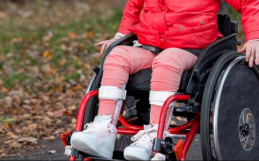Do you have pain in the bottom of your heel or the back part of your arch? Are you finding it painful to stand or walk around in your shoes? Is the pain worse with the first few steps in the morning or after standing and walking after periods of rest?
If you are experiencing these symptoms, then you may be suffering from plantar fasciitis. Plantar fasciitis is a common condition that will affect 1 in 10 people over the course of their lifetime.
In this blog, we will outline what plantar fasciitis is and explain how to relieve plantar fasciitis pain, so your body is able to heal and you’re able to get back doing the things you love to do. Please leave us a comment below if you have any questions!
What is Plantar Fasciitis?
Plantar fasciitis is a common foot problem that affects a band of connective tissue called the plantar fascia, which extends from your heel bone forward to your toes along the bottom of your foot.
Plantar fasciitis occurs when this connective tissue on the bottom of your foot is strained and becomes inflamed. This can happen as a result of any combination of poor foot mechanics, unsupportive footwear, Achilles tendon tightness, and sudden change in activity level or intensity.
People who suffer from plantar fasciitis will typically experience heel pain first thing in the morning, and after periods of rest. After these first initial steps, the pain typically improves, however as the day progresses the pain with often return. This pain may also become worse in certain types of footwear.
Heel Spur Misconception
There is a common misconception that plantar fasciitis is caused by the presence of a heel spur. A study published the Journal of Clinical Orthopaedics demonstrated that only 50% of patients with plantar fasciitis actually had heel spurs.
This study also showed that in patients with only one heel affected by plantar fasciitis, the symptom-free side often also had a heel spur and, in some cases, the heel spur was larger than the symptomatic side.
Heel spurs are a calcium deposit that forms horizontally at the base of the heel, where the plantar fascia originates. Heel spurs are formed by the body in an attempt to strengthen the attachment of the plantar fascia to the heel, due to repeated microtrauma. It can be considered a symptom of prolonged plantar fascia strain.
How to Cure Plantar Fasciitis
The best way to get relief from plantar fasciitis is to consult with our team of professional orthotists and pedorthists at Applied Biomechanics. Our trained professionals will be able to assess the cause of your plantar fasciitis and recommend a full course of treatment that is tailored to your specific situation.
The goal of this treatment will be to reduce the stress being placed on your plantar fascia due to the biomechanical function of your feet. This is accomplished through the proper design of prescription custom foot orthotics and orthopedic or therapeutic footwear. Depending on your individual case, we may also recommend a range of complementary treatments including physical therapy, night splints, or exercises to stretch the plantar fascia.
Book an appointment with us today to get started.
Commonly Asked Questions About Plantar Fasciitis
Here are some commonly asked questions that we hear from our patients:
What footwear is best for treating plantar fasciitis?
Proper footwear can play a very big role in helping your plantar fascia heal. A good shoe is one that provided appropriate stability, as this will help to reduce the stress to your plantar fascia.
Ideally, you shouldn’t be able to ring your shoe out like a rag, bend it in half, or easily compress the area of the shoe around your heel. It should only bend at the toes. It is also important to select a shoe with the appropriate heel height.
Proper heel height (ideally around 10mm difference between heel and forefoot) will place less strain on your plantar fascia. Lower heel heights can strain your Achilles tendon and plantar fascia further and exacerbate the condition.
If you are having trouble finding a pair of shoes that fit, you may want to consider an orthopedic or therapeutic shoe. At Applied Biomechanics, we offer a wide selection of leading brands with the appropriate foot and ankle support.
Which orthotics are best for plantar fasciitis?
Orthotics designed to relieve plantar fasciitis need to address the specific biomechanical issues which are causing the increased load to be placed on your plantar fascia. In most cases, this means a custom foot orthotic that is made just for you and your specific foot alignment and pathomechanics.
Our custom orthotics are created on-site in our state-of-the-art lab using High Definition – 3D Laser Imaging to generate an extremely accurate measurement of your feet. Computer-aided technology allows us to use these models to manufacture high-quality orthotics to fit you perfectly.
If you have questions about plantar fasciitis treatment, please contact us for more information. We’re happy to help!






